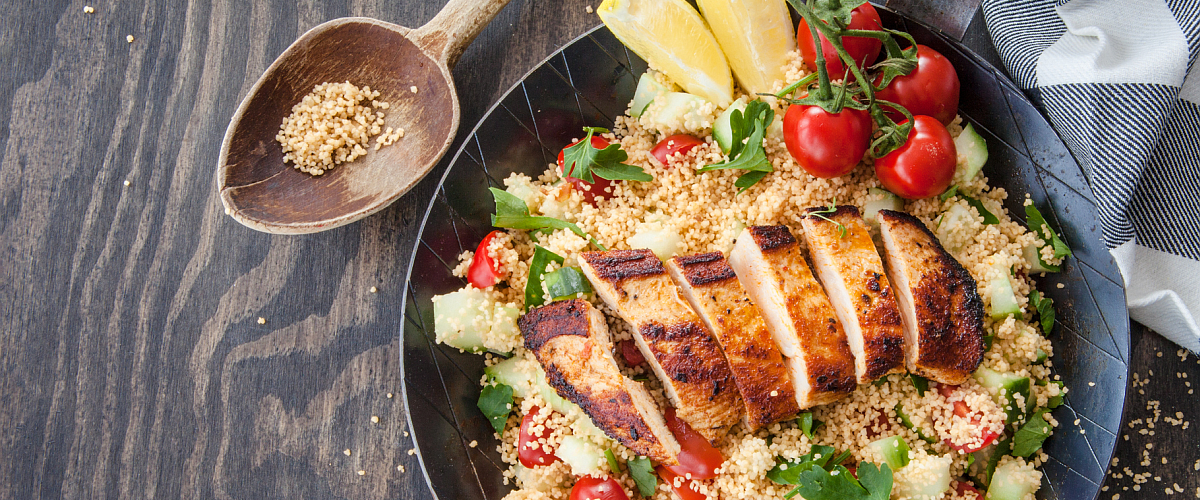Americans love their chicken. In fact, the average person eats almost two pounds of it a week, according to the National Chicken Council.
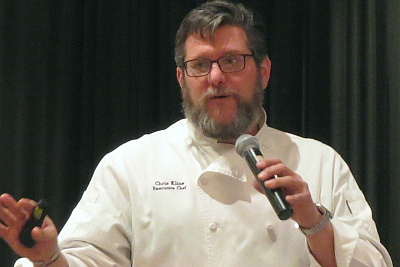
Chicken reigns supreme for many reasons—and who better to explain why than our partners at Tyson Foods? We called up Chris Kline, Senior Executive Chef at Tyson Foodservice, to learn what makes chicken such a hit and the many ways to prepare it.
1. IT’S A HEALTHY CHOICE
People turn to chicken because of its well-earned
reputation as a good source of protein, says Chef Chris. Ounce-for-ounce, this
poultry is one of the leaner animal proteins out there.
From past conversations with Aramark experts, we know that
when we consume the right amount of protein per day (about 7 grams of protein
for every 20 pounds of body weight), it can help us build muscle and maintain a
healthy weight. Chicken also offers up several vitamins and minerals including
potassium, magnesium, iron, zinc and B vitamins.
But what about serving size? When thinking about chicken at mealtime, Chef Chris tells us to think of a deck of cards as the standard serving size, which clocks in at three ounces. For the leanest cuts, he recommends choosing skinless pieces that are baked, roasted or grilled instead of fried chicken or saucy wings.
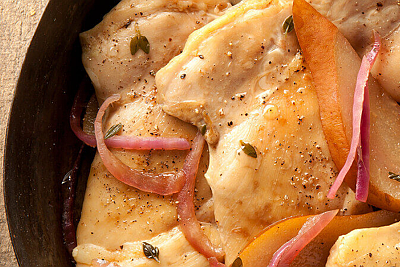
We can’t talk about chicken without touching on the white versus dark meat debate that happens at many family dinner tables! The difference between the two types all has to do with the kind of muscle the meat comes from, according to Chef Chris. “Dark meat provides a richer, juicier taste with more calories and saturated fat than white meat,” he explains. “But it’s a relatively small nutritional difference in your overall diet.” Feel free to enjoy dark meat, like chicken thighs, in moderation (like anything else).
2. IT’S EASY AND CONVENIENT
Ever see a “sold out” sign in the chicken
section of a store? Didn’t think so. Chicken is readily available in pretty
much every supermarket and restaurant, and generally less expensive than other meats like pork and beef.
It’s also very easy to cook—something Chef Chris appreciates as a working parent with two young boys at home. “My wife and I don’t have time for complicated cooking techniques. Every night we try to balance family time with a good, wholesome, nutritious meal using fresh ingredients,” he tells us. When chicken is on the menu, it’s mission accomplished.
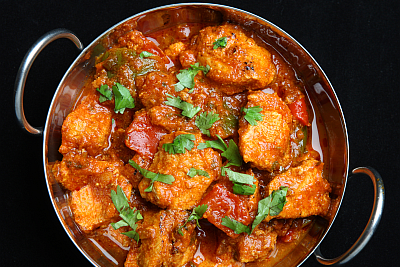
Chicken is also a bonus for meal-planning because you can cook once and eat twice. Chef Chris likes to whip up entire sheet pans of chicken breasts or thighs. His children enjoy Asian flavors, so one night’s teriyaki-marinated chicken breasts might become tomorrow’s Asian chicken salad, served either as a sandwich or atop salad greens. Store-bought rotisserie chickens are a staple in their household for much the same reason. Most grocery stores offer rotisserie chickens without the skin but if that isn’t an option at your go-to spot, simply take it off yourself. Removing the skin before digging in can help lower the fat content a bit!
Chef Chris is a fan of other time-saving products you’ll find in the freezer aisle, too. He recommends fully cooked breast strips for salads, stir fries and pasta dishes. Last fall, Tyson Foods got in on the air fryer trend, introducing Tyson® Air Fried* Chicken with 75% less fat** than traditional fried chicken and no air fryer necessary.
“People want to eat meals that are wholesome and healthy, but they’re always on the go, and sometimes convenience wins out,” he says. “With chicken, these things can go hand-in-hand.”
The trick is to combine convenience items with fresh, better-for-you ingredients. For a satisfying entrée salad, layer cooked chicken breast with whatever produce you have on hand and a homemade dressing. If you’re making a chicken salad sandwich, go with light mayo, plain Greek yogurt, or even mashed avocados for the creaminess factor.

3. IT’S A VERSATILE CROWD-PLEASER
Chicken appeals to many tastes, making it
especially family friendly. “I serve chicken because I know my kids are going
to eat it!” he says. “At the same time, it works well for backyard barbecues
and dinner parties.”
There’s a chicken preparation to suit just about any cooking method and flavor profile. He offers up these tips for home chefs:
- Make a marinade: Marinades will impart bold flavors to your chicken dish. “You can marinate chicken anywhere from a few hours to overnight,” he advises. He favors simple marinades made from olive oil, vinegar or juice, plus seasonings. Or try Tyson’s garlic-lime-soy marinade. Spice rubs are great for adding flavor as well. You can make marinades and rubs at home or if you’re searching the grocery store, be sure to look for low-sodium and low-sugar options.
- Roast away: In colder weather, Chef Chris heats up the oven to roast whole chickens, chicken thighs, or breasts with the wing joints on (his sons are partial to crunchy chicken wings). Roasting chicken with the skin on can help keep meat juicier and more flavorful—just remove it before eating to keep the fat content in check.
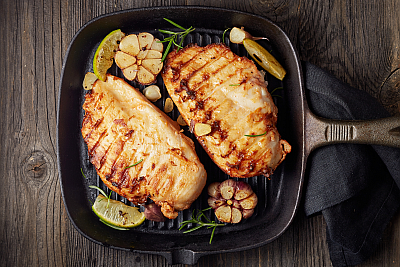
- Get grilling: Summertime finds him cooking chicken kebabs over a charcoal grill. His family likes tropical kebabs made with chicken breasts or thighs, pineapple, onions, and peppers. Mediterranean is another winning flavor combination, with zucchini, peppers, and a simple marinade made from lemon, olive oil, and garlic. To not lose any favorite small items like onions or peppers, he recommends using a perforated grill pan or an all-metal cooling rack.
- Mind the time and temp: “Folks tend to overcook chicken, especially skinless breasts, which can make them too dry,” says Chef Chris. Your best bet for both flavor and food safety is a food thermometer. It will tell you exactly when chicken reaches the optimal 165 degrees Fahrenheit.
Ready to revamp your go-to chicken dishes? Try the recipes listed here or find other on our recipe page!
*Uses circulated hot air with a touch of oil to achieve a fried-like product and texture
**Than USDA for chicken breaded fried and boneless
Note: Since everyone’s health history and nutritional needs are so different, please make sure that you talk with your doctor and a registered dietitian to get advice about the diet and exercise plan that‘s right for you.

